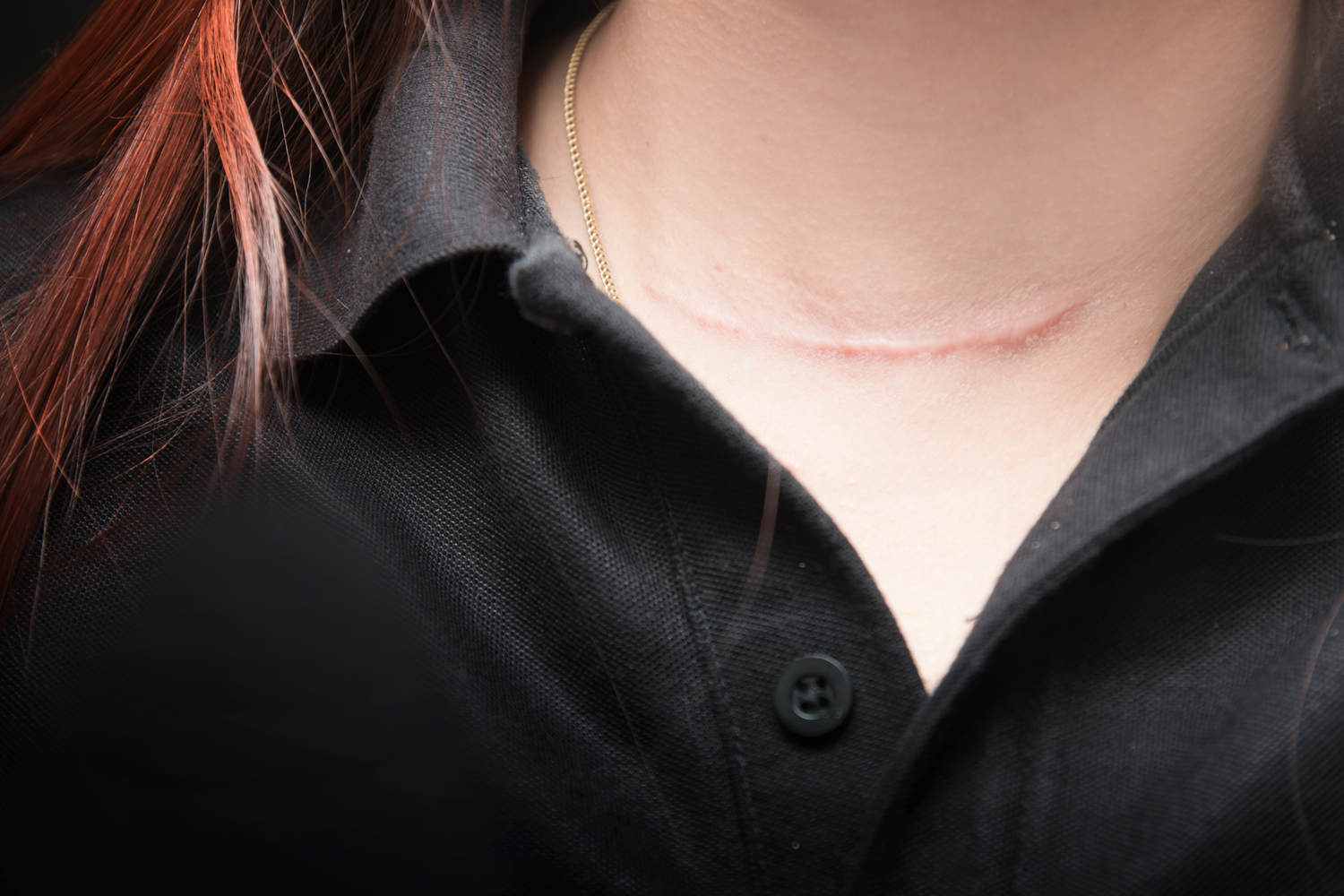What can I do to reduce the appearance of a scar from my cancer surgery?

Mark Fisher, plastic and reconstructive surgeon at Johns Hopkins Medicine in Baltimore
A scar is your body’s way of healing after an injury, including surgery to remove cancer. Scars can be flat, lumpy, sunken or a different color than your skin. The way your scar looks will depend on many factors, including your skin type, where the incision is made on your body, and your age.
For instance, some people are more likely to develop a keloid scar, which is a type of scar that’s thick and raised. People of all races and ethnic backgrounds can develop keloid scars, but for reasons that aren’t entirely clear, people with darker skin are more likely to develop these scars.
Sometimes a scar may grow outside the boundaries of the injury, which can make even a small incision turn into a large scar. A large scar is more likely to form when your skin is stretched tightly to close the incision or when the incision is located in a part of your body where there is a lot of movement, such as your arms or shoulders. In an older person, a scar may fade beautifully due to underlying changes that come with aging, while a younger person may have a more aggressive scarring response.
While you can’t change many of these factors, working with your doctors to optimize your health before surgery can help support wound healing. For instance, vitamins C and D play a role in wound healing, so it may help to make sure you get enough of those nutrients. If you have diabetes, make sure you have your blood sugar under good control since uncontrolled diabetes can cause inflammation and make you more prone to infections, both of which can make scarring worse.
After surgery, follow your doctor’s advice for keeping your incision clean and changing any bandages. Antibacterial ointments, petroleum jelly, and silicone tape, sheets or gels can help reduce scarring as you heal. Avoid sun exposure, which can affect a scar’s appearance and slow healing.
If you don’t like the appearance of your scar after the incision has fully healed, there are a range of steps you can take to minimize it. A dermatologist may use steroid injections to treat a scar that’s thick and red. Laser therapy also may help reduce the appearance of a scar, along with relieving pain, tenderness and itchiness.
Scar revision surgery, in which a plastic surgeon removes the scar tissue and sometimes adds healthy tissue to relieve tension, may improve the appearance of your scar or move the scar into a natural fold to make it less noticeable. If surgery isn’t for you, certain makeup techniques can help camouflage scars.
Let your surgical team know what it is about your scar that bothers you so they can refer you to a dermatologist, plastic surgeon or other specialist for help. Is it just the way it looks, or is it also how it feels? Your doctor can help you think through the costs and benefits of different treatment options to choose one that makes sense for you.
Additionally, work toward accepting your scars. Try to adopt a mindset in which you think, “Yes, I’ve been through cancer, and these are my scars. I’m OK with that part of me, and I own them.” In this way, no matter what you choose to do to reduce the appearance of your scar, you can move to a place of greater empowerment.
CARING FOR YOUR SCARS // Memorial Sloan Kettering Cancer Center offers advice on how to care for your scars after surgery. // The American Academy of Dermatology Association explains how staying out of the sun or using sun protection can help minimize the appearance of scars.
The expert’s response was edited for clarity and based on an interview with Kendall K. Morgan.
Cancer Today magazine is free to cancer patients, survivors and caregivers who live in the U.S. Subscribe here to receive four issues per year.





